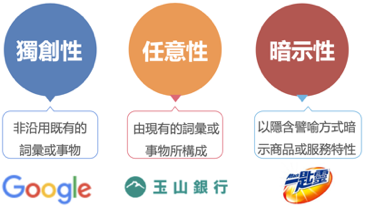July 27, 2023 Copyright ©️ 2023 by Jin Rui International Patent and Trademark Joint Office
The function of a trademark is to facilitate consumers in distinguishing between goods or services offered by different businesses. When a trademark lacks distinctiveness, it becomes less memorable, essentially losing its trademark function.
What is trademark distinctiveness?
According to Article 18 of the Taiwanese Trademark Law, "distinctiveness" refers to the ability of a trademark to enable relevant consumers to recognize it as an indication of the source of goods or services and distinguish it from the goods or services of others.
In simpler terms, it means that consumers can easily and clearly differentiate between similar goods or services through a trademark. According to the criteria for trademark distinctiveness examination, the key to successfully registering a trademark lies in whether it possesses distinctiveness. Moreover, trademark distinctiveness can be classified into two types: "inherent distinctiveness" and "acquired distinctiveness."
• Inherent distinctiveness refers to trademarks that are easily recognizable without the need for extensive advertising or marketing efforts.
Naming styles with inherent distinctiveness include:

• Acquired distinctiveness, on the other hand, refers to trademarks, particularly logos, that originally lack distinctiveness but acquire it through extensive use in the market. This can be supported by factors such as high revenue, substantial advertising expenses, and widespread recognition.

Examples of trademarks that gained distinctiveness through acquired means:
• Simple lines or basic geometric shapes, e.g., □, ★
 cloud patterns
cloud patterns


• Religious-related images, terms, and folk cultural symbols, such as "Earth Deity" (土地公) for example.
• Slogans
•Common congratulatory phrases, auspicious sayings, popular phrases, or idioms
※ Note: Acquired distinctiveness is a result of artificial efforts through use, hence it is also known as the "secondary meaning."








